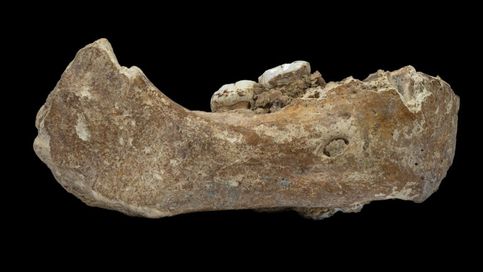
Denisovan Jaw
(Photo by ZHANG Dongju, Lanzhou University,
in Science News, 196(11):27 (2019-12-21/2020-01-04)
|
Go to Essential Fossils index. Go to site main page. Open Fossils Glossary, Charts. |
Content created 2020-01-07 File last modified: Go back to H. neanderthalensis. Go ahead to Homo sapiens. |
